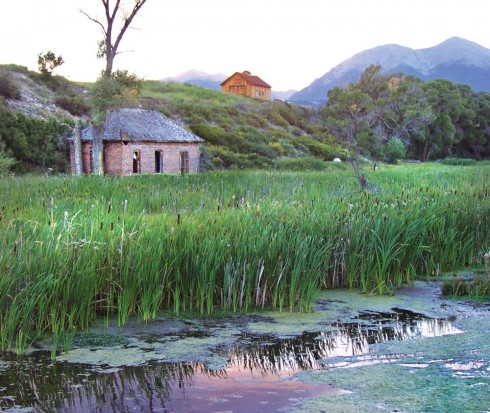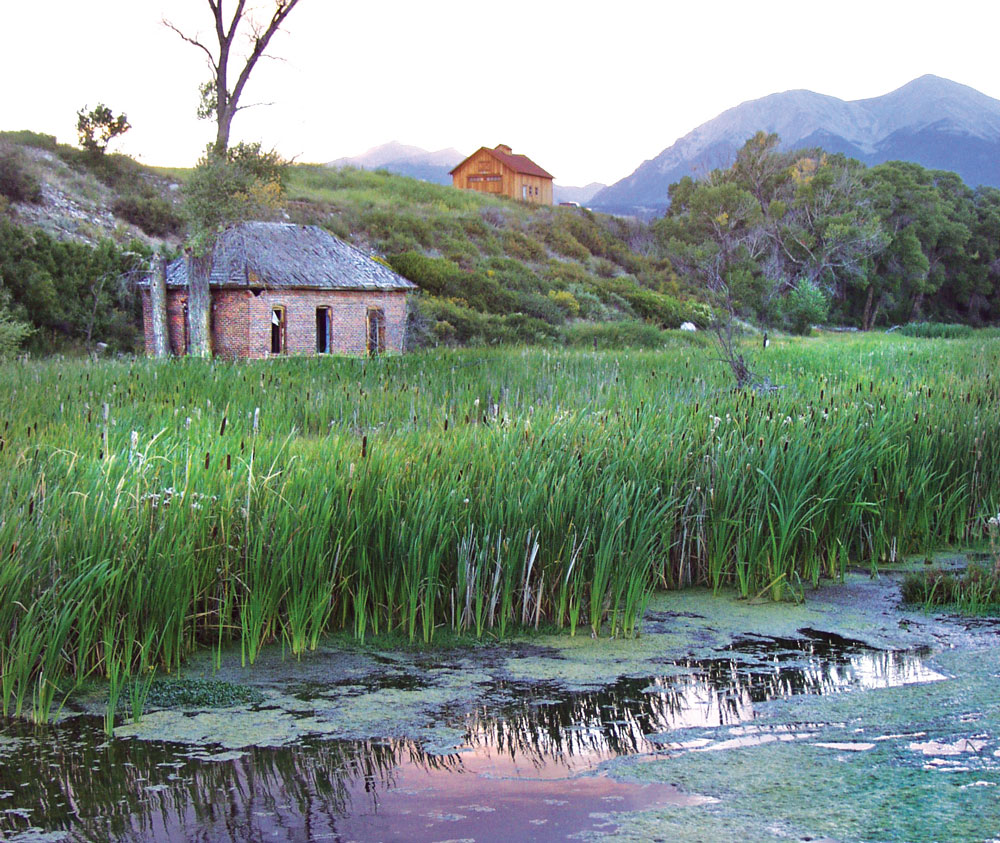By Mike Rosso
When Marilyn and Harold Sampson of Lawrence, Kansas decided to purchase property in Chaffee County in 2005, they probably didn’t expect to someday own an infamous piece of the county’s history.
The sent their son Darrell on a scouting mission and he discovered six acres of land on County Road 160 that bordered State Wildlife land. On it sat a newer barn and a dilapidated old brick structure on the edge of some wetlands below the mesa.

It wasn’t until after they purchased the property that they learned from a neighbor, Sally Greigo that they were now the owners of an infamous “pest house.”
Sally and her husband Brad own the River Run Bed and Breakfast, which was once the county poor farm. Built in 1891, the three-story building was designed to house the poor at public expense. The poor farm provided opportunities for the able-bodied elderly and the destitute to work plots of land on the 200+ acres, helping to raise cattle, chickens and vegetables for the farm. In exchange they received lodging and food. At any given time it housed approximately 15-20 “inmates” who slept on iron cots with rough sheets and old Army blankets.
One of the major concerns at the poor farm was illness. In the days before vaccines and immunization became widely available, a quarantine was a common method to prevent contamination of the public. Some of these “pestilences” included contagious diseases such as typhoid, smallpox, diphtheria and scarlet fever.
In an effort to keep residents of the poor farm “safe” from these contagions, a four-room brick “pest house” was constructed about a quarter-mile upriver and below the poor farm. It was to this house that unfortunate residents were sent upon diagnosis of communicable illnesses. The sick lived apart and isolated, did their own cooking and laundry, and were visited by a physician at most once a week. It is suggested that when the pest house became full, the overflow infirm lived in cars surrounding the house.
According to a 1985 article in the Salida Mountain Mail, writer Arlene Shovald quoted Salida native Ralph Post, who was raised across the river from the poor farm and pest house:
“I don’t know if any medical staff ever actually stayed there with the people. The main thing I remember about was we were really scared to go anywhere near there.”
Eventually vaccinations came into general use and the pest houses began to close their doors sometime in the mid- 1930s.

The county poor farm operated until the 1940s. Eventually the property was subdivided, some of it becoming private – such as the land where the old pest house still stands – and State Wildlife property.
Over the years the abandoned pest house began to crumble and deteriorate. Several cottonwood trees took root alongside the structure, compromising not only the brick walls but the foundation as well. The house was also used as a party spot for adventurous teens who littered the grounds with bottles and other assorted detritus of adolescence.
The Sampsons weren’t quite sure what to do with the old building. It has no electricity or running water and is difficult to access, but Darrell decided that he “Couldn’t stand to see it fall down on my watch,” and so, this past year, began a process of restoration. He hired master mason Terry Alexander and brickmason Herman Lapp and work began rebuilding the foundation for the north end that had collapsed. They cut down the invasive trees and dug up the stumps. Darrell estimates that they removed and cleaned approximately 1,500 bricks in the process. Over the next several years he hopes to replace or restore the windows and doors, as well as replace the roof and finish the interior walls and floor. The family wants to eventually use the old building as a rustic cabin. They remind readers the house is on private property and not open to public viewing. Alexander considers the home “a lucky one that managed to get restored.”
Said Darrell, “We are just trying to save it.”
Special thanks to Salida writer Arlene Shovald whose research was a big help in compiling the history of the pest house.


